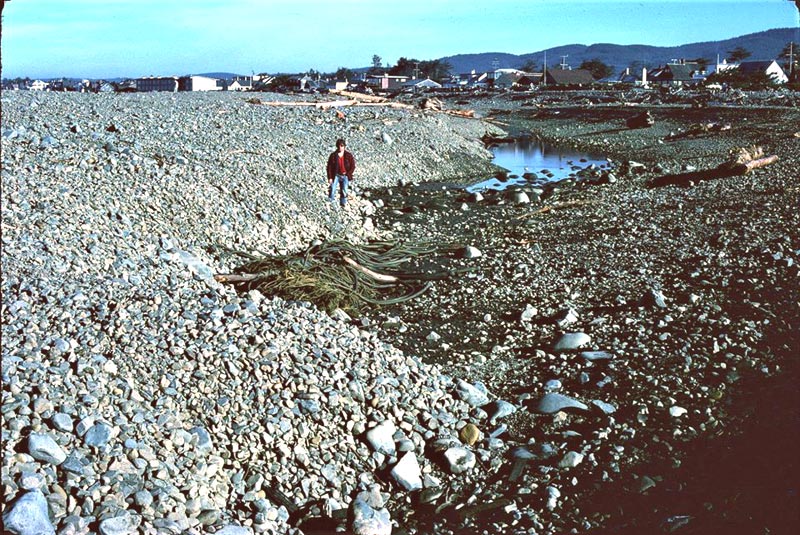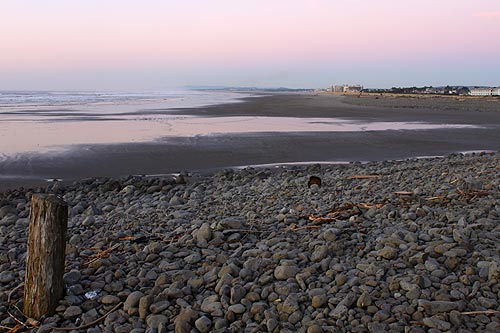Seaside's Drastic, Startling Changes: Oregon Coast History, Part Two
Published 04/14/2020 at 5:24 PM PDT
By Oregon Coast Beach Connection staff

Includes exclusive listings; some specials in winter
In Cannon Beach:
Includes rentals not listed anywhere else
In Manzanita, Wheeler, Rockaway Beach:
Some specials for winter
In Pacific City, Oceanside:
Some specials for winter
In Lincoln City:
Some specials for winter
In Depoe Bay, Gleneden Beach:
Some specials for winter
In Newport:
Look for some specials
In Waldport
Some specials for winter
In Yachats, Florence
Some specials for winter
(Seaside, Oregon) – Since its inception as a major tourist destination for Oregon back in the 1880s, Seaside and the areas north of there have undergone some remarkable changes. It’s been dramatic and startling, as seen in part one of Seaside Changes, Oregon Coast History.
The biggest catalyst was the building of the jetties on the Columbia River, which within ten years of their completion in 1917 resulted in thousands of extra feet of shoreline getting added. It caused the currents to change so much they deposited as much as an extra mile of sand in some areas. In Seaside, the beach went from 100 or so feet wide to its current 1,000 feet.
The story picks up again here:
In 1921 the concrete Promenade we all know and love was finished – and next year is set to be a big 100-year celebration of that (barring more coronavirus issues).
Up north, dunes started marching eastward and tussling up farmlands. Around then, invasive species of beach grass were introduced to stabilize wind-blown dunes, which sometimes actually made the situation worse all up and down the Oregon coast. Those invasive species took over, knocking out many native trees and plants of the region. In a way those invasive species backfired as well: it halted the spread eastward but the dunes along the beaches grew fatter and taller. The big Bandon fire about a century ago happened because of invasive species introduced into the area.

A weird little secret about those dunes is that Seaside should look like Gearhart, with its massive dune complex and thick cover of beach grass. However, Seaside sculpts its look – it does a bit of dune “manscaping,” if you will. The town actually shaves down the dunes occasionally, leaving the view open from the Prom to the sea. Otherwise it would have that look of Gearhart’s.

Above: the cove in '87 as debris was building a new beach (photo courtesy Tom Horning)

Above: near the Cove at Seaside over 100 years ago, courtesy Seaside History Museum.
Another rather startling change to Seaside’s landscape happened in the late ‘80s. Until then, the southern end at the Cove was still tiny by comparison. There was about 300 feet less than what you see now. But in 1987, something bizarre happened: a major landslide along the western part of Tillamook Head dumped massive amounts of boulders and debris into the sea, which added some 300 feet to a beach only about 200 feet wide. Much of that stretch from the parking lot at Avenue U wasn’t there until after ‘87.
All that rocky stuff started filling in the Cove quite quickly. Soon after, a new rocky spit appeared. Locals appreciated that, using it to catch loads of fish. Before long, however, the spit and the land were connected by moving debris and sand, thus forming large pools of sea water that, well, stank really bad awfully soon. At one point, time and tide filled in all that and created a beach that had never been there before.

This has an extra added element of weirdness because there were a lot of dead bodies buried in unmarked graves in this area going back maybe hundreds of years, starting with the native population. But as soon as proto-Seaside was settled, the bodies of people that had drowned offshore ended up here, often from ships that were en route to Astoria from exotic places like Russia, Scandinavia or Portugal. They frequently buried them in the cove area.
There is a grave of the “unknown sailor” still tended to today at the Cove.
There were major look changes to the north Oregon coast town for a time, including the towering cranes that eventually constructed high-rise condos at the Turnaround. First, they tore down the old buildings that had been in those spots for decades. Then the massive cranes went up, looking a bit like something out of a sci-fi movie. They slowly built the skyscraper-like condos, now the tallest structures on the Oregon coast.

Those dunes along this stretch from Seaside to the northern border of Oregon have an interesting secret. If you look at the mass
Nature’s changes have a little more in store for Seaside and Clatsop Beach. These days, all that sand building up has slowed its rate greatly, down to dune expansion of only 12 feet per year or so, according to Seaside geologist Tom Horning. It had been as much as 35 feet per year. Larger erosion events take place every other year or so, eating away chunks of dunes, and it may not be long before we start seeing Clatsop Beach shrinking. Drastic Changes and Old Looks of Seaside: Oregon Coast History Part 1
Hotels in Astoria/Seaside - Where to eat - Astoria Maps and Virtual Tours
Cannon Beach Lodging
Nehalem Bay Lodgings
Manzanita Hotels, Lodging
Three Capes Lodging
Pacific City Hotels, Lodging
Lincoln City Lodging
Depoe Bay Lodging
Newport Lodging
Waldport Lodging
Yachats Lodging
Oregon Coast Vacation Rentals
Oregon Coast Lodging Specials
More About Oregon Coast hotels, lodging.....
More About Oregon Coast Restaurants, Dining.....
LATEST Related Oregon Coast Articles
Weather good for most of Oregon. You'll need a camera to see. Astronomy
Ethereal in the East: Check Oregon, Washington Even Coastlines for Zodiacal L...
Look to east for 'False Dawn' - bring your camera. Sciences, astronomy
Sparks Above and Below: One Surreal, Dreamlike Oregon Coast Eve
Where astronomy crashes into marine biology and meteorology. Cannon Beach, Wheeler, Manzanita, Seaside, Newport
Labor Day Weekend Travel Tips, Advice for Oregon Coast, 2025
Higher lodging prices, more traffic, gas prices, weather and tips
Lincoln City Fall Kite Festival Returns with Night Flights Over Central Orego...
Sept 19 - 21 there's a new addition and some extra glass floats. Lincoln City events
Florence Opens Photo Contest: $250 Prize for Best Central Oregon Coast Snap
Inviting amateur and professional photographers. Florence events
Oregon Shores Holds Fundraising 'Toast the Coast' Aboard a Portland Ship
Sept 20 aboard the Willamette Star. Neskowin events, Pacific City events, Tillamook events, Garibaldi events, Rockaway Beach events, Manzanita events, Cannon Beach events, Seaside events and Astoria / Warrenton events.
Latest on Shellfish Fun Along Oregon Coast - Pacific Halibut Angling
Crabbing, mussels, razor clams and ocean fishing. Marine sciences
Back to Oregon Coast
Contact Advertise on BeachConnection.net
All Content, unless otherwise attributed, copyright BeachConnection.net Unauthorized use or publication is not permitted















































